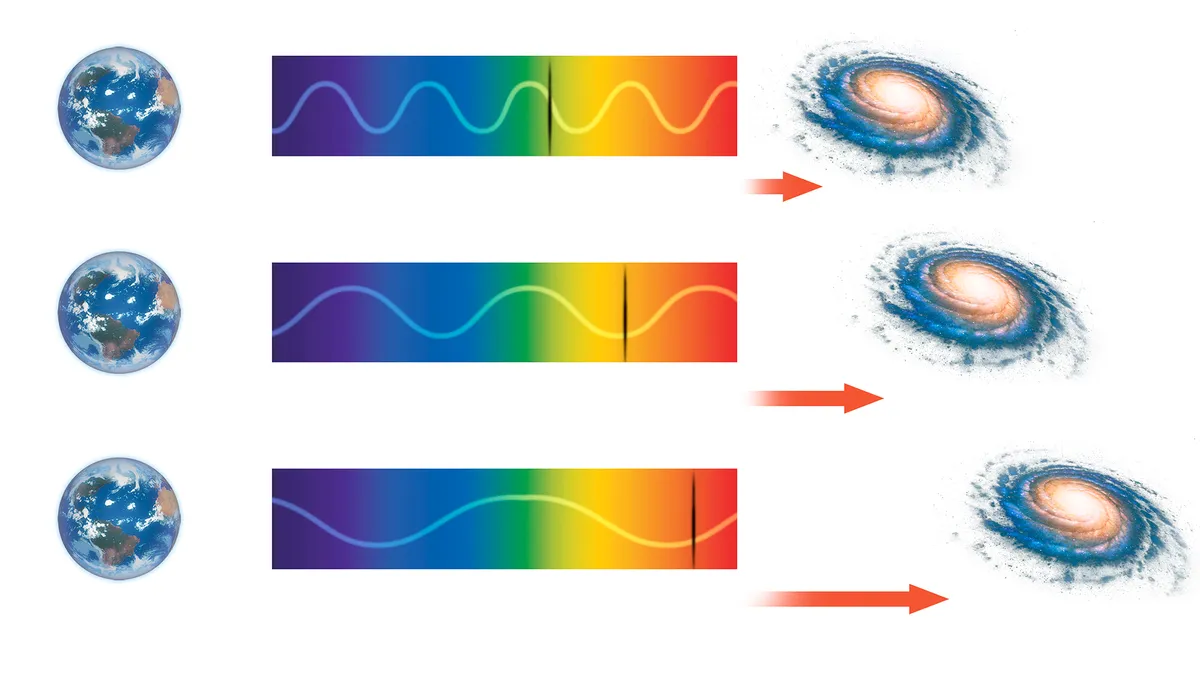You may have heard astronomers and cosmologists talk about redshift.
It relates to the expansion of the Universe and how that expansion causes the stretching of light from distant galaxies.
For example, if a galaxy is 1 billion lightyears from Earth, then light from that galaxy takes 1 billion years to reach our telescopes.
More amazing space science

And in the time between light leaving the galaxy and reaching Earth, the Universe will have expanded, stretching that light as it does so.
That's redshift in a nutshell, but to really understand it, we must first go all the way back to the birth of the Universe.

Redshift and the expanding Universe
The Universe is expanding in the aftermath of the Big Bang 13.8 billion years ago.
So in the time it takes for light from a distant object in space to reach Earth, the Universe has grown in size.
The effect of this is to stretch the wavelength of the light, much as a wave drawn on the fabric of a balloon would be stretched if the balloon were inflated.
The wavelength of red light is about twice that of blue light, so the stretching of visible light shifts it towards the red end of the spectrum: thus the term ‘redshift’.

Redshift z value
The letter ‘z’ is used by astronomers to denote the redshift of a celestial object such as a galaxy.
Redshift is defined as the fractional change in the wavelength of the light. That is, the observed wavelength minus the emitted wavelength divided by the emitted wavelength.
An object with a redshift of z emitted its light when the Universe was 1 / (1 + z) of its present size.
With this definition, objects on our doorstep have a redshift of zero.

Conversely, a quasar with a redshift of 6 existed when the Universe was 1/7th its current size.
The cosmic microwave background radiation – the ‘afterglow’ of the Big Bang fireball – with a redshift of about 1,000, comes from an epoch when the Universe was about 1/1,000th its present size.
The redshift of an object is not related to its distance in a simple way. This is because the Universe has not expanded at a constant rate.
It expanded faster than average in the beginning and is expanding faster than average again today.
Could galaxy redshifts locate the centre of the Universe?
The answer is yes… and the centre is here!
Redshift in wavelength of light emitted by a galaxy is related to its velocity – and other galaxies are rushing from us.
But before you think that the Milky Way is in a super-privileged location at the centre of creation, if we were in the Andromeda Galaxy we would also think we were at the centre.
How come? Well, the Big Bang didn’t happen at any one location. Instead, space and matter came into being and started expanding everywhere.
Think of the galaxies in the expanding Universe as raisins in a giant rising cake.
It wouldn’t matter which raisin you sat on – all the other raisins would be moving away and it would seem as if you were at the centre.
This article originally appeared in the October 2006 and March 2010 issues of BBC Sky at Night Magazine.

